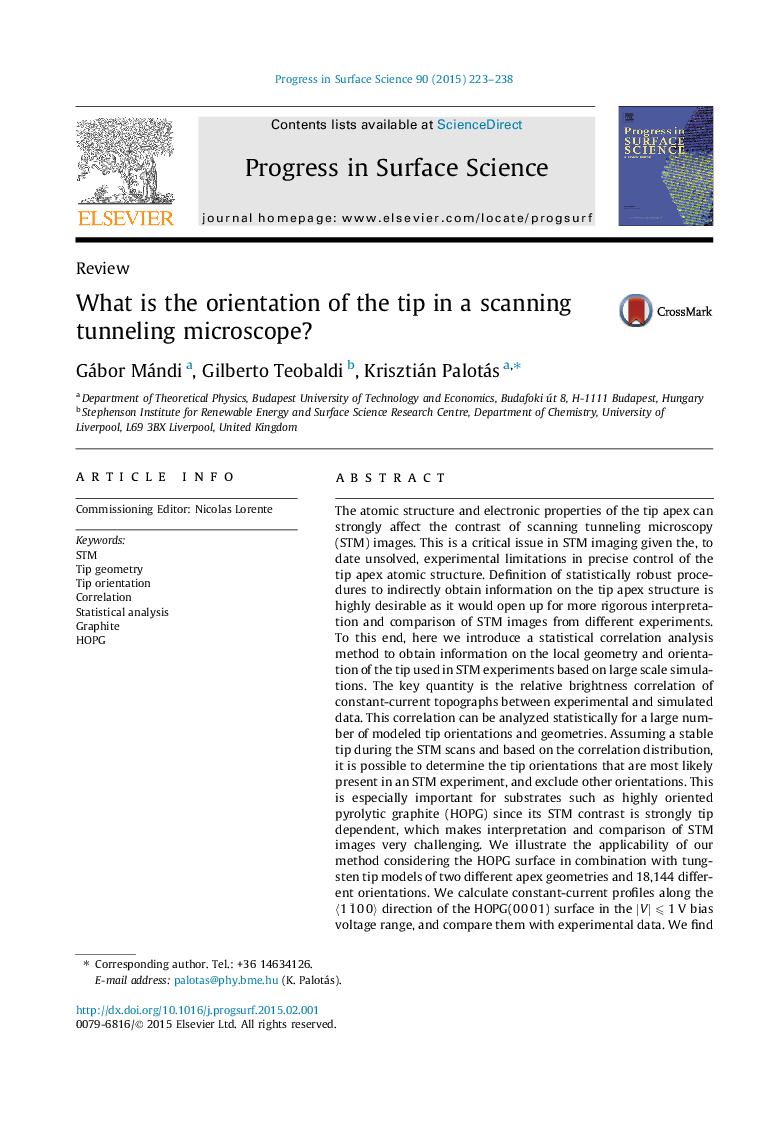| Article ID | Journal | Published Year | Pages | File Type |
|---|---|---|---|---|
| 5419941 | Progress in Surface Science | 2015 | 16 Pages |
Abstract
The atomic structure and electronic properties of the tip apex can strongly affect the contrast of scanning tunneling microscopy (STM) images. This is a critical issue in STM imaging given the, to date unsolved, experimental limitations in precise control of the tip apex atomic structure. Definition of statistically robust procedures to indirectly obtain information on the tip apex structure is highly desirable as it would open up for more rigorous interpretation and comparison of STM images from different experiments. To this end, here we introduce a statistical correlation analysis method to obtain information on the local geometry and orientation of the tip used in STM experiments based on large scale simulations. The key quantity is the relative brightness correlation of constant-current topographs between experimental and simulated data. This correlation can be analyzed statistically for a large number of modeled tip orientations and geometries. Assuming a stable tip during the STM scans and based on the correlation distribution, it is possible to determine the tip orientations that are most likely present in an STM experiment, and exclude other orientations. This is especially important for substrates such as highly oriented pyrolytic graphite (HOPG) since its STM contrast is strongly tip dependent, which makes interpretation and comparison of STM images very challenging. We illustrate the applicability of our method considering the HOPG surface in combination with tungsten tip models of two different apex geometries and 18,144 different orientations. We calculate constant-current profiles along the ã11¯00ã direction of the HOPG(0 0 0 1) surface in the |V|⩽1V bias voltage range, and compare them with experimental data. We find that a blunt tip model provides better correlation with the experiment for a wider range of tip orientations and bias voltages than a sharp tip model. Such a combination of experiments and large scale simulations opens up the way for obtaining more detailed information on the structure of the tip apex and more reliable interpretation of STM data in the view of local tip geometry effects.
Related Topics
Physical Sciences and Engineering
Chemistry
Physical and Theoretical Chemistry
Authors
Gábor Mándi, Gilberto Teobaldi, Krisztián Palotás,
